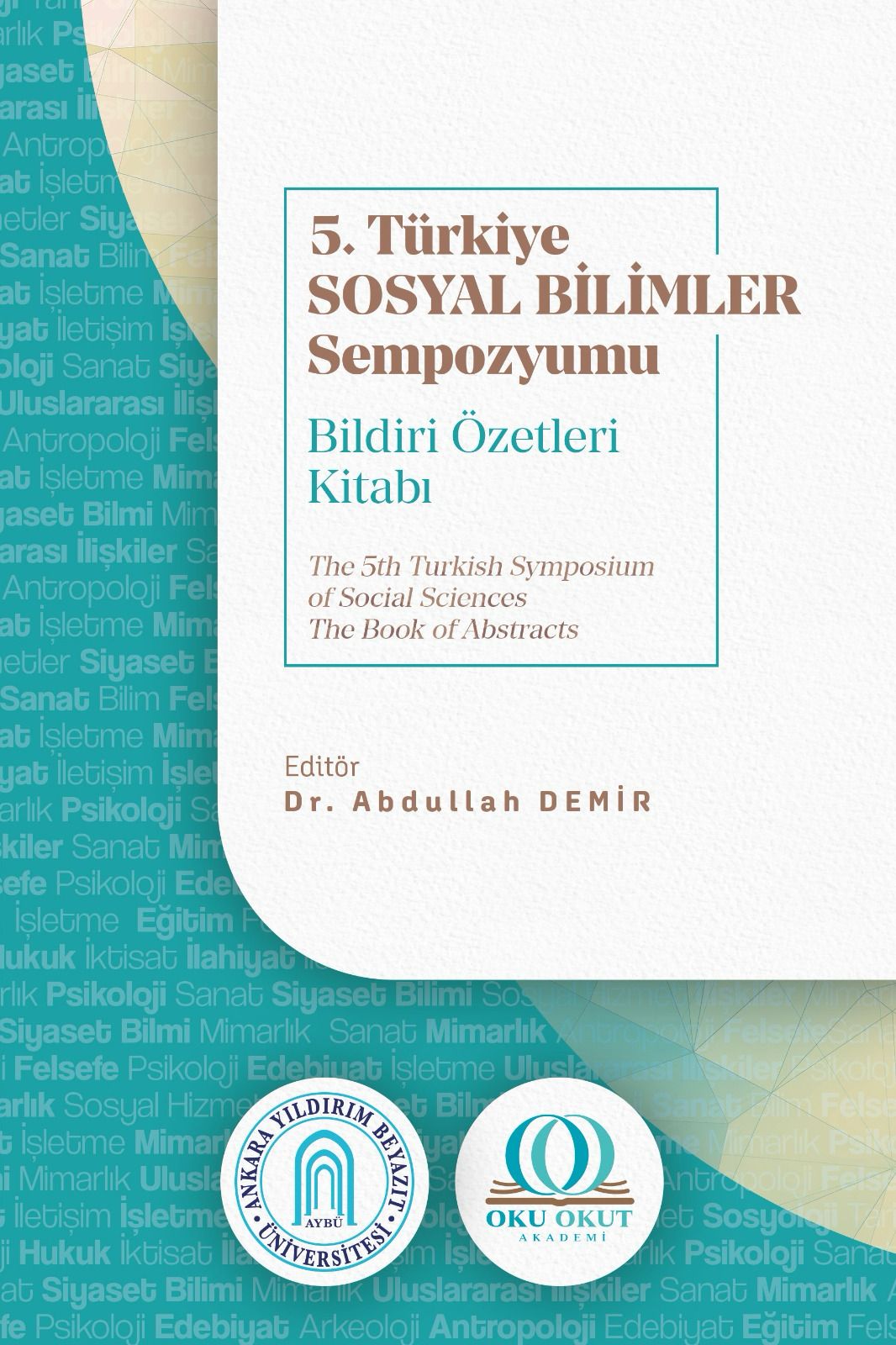Ṣalāḥ ʿAbd al-Fattāḥ al-Khālidī’s Thematic Tafsir Approach: The Case of Sūrat Muḥammad (Sūrat al-Qitāl)
Salâh Abdülfettâh el-Hâlidî’nin Konulu Tefsir Yaklaşımı: Muhammed (Kıtal) Suresi Örneği
This study examines Salah Abd al-Fattah al-Khalidi’s interpretation of the Surah Muhammad (Qitāl) within the framework of his work al-Tafsīr al-Mawḍū’ī bayn al-Naẓariyya wa’l-Taṭbīq (“Thematic Exegesis Between Theory and Practice”). In this context, it aims to reveal both the theoretical background and the practical application of al-Khalidi’s thematic tafsir method. The exegete structures the surah into an introduction (muqaddima), four thematic lessons (dars), and a conclusion (khatima). He also draws attention to the deeper layers of meaning in the surah through a section titled lataif (subtle points), in which he offers insightful observations.
Al-Khalidi begins his tafsir by discussing the names of the surah, noting that it appears in the Qur’ān under three different titles: Surah Muhammad, Surah Qitāl (Combat), and Surah al-Ladhīna Kafarū (Those Who Disbelieve). In addition, under the heading of identifying the ijtihādī (interpretative) name of the surah, he puts forward his personal judgment and suggests that the surah may also be called “Surah al-Jihād” (The Chapter of Struggle), emphasizing that each name reflects dominant themes in the surah’s content.
He then provides information about the time, place, and historical context of the surah’s revelation. In this framework, he analyzes how the atmosphere conveyed in the surah relates to the structure of the Muslim community and the challenges it faced. In connection with this, he explores the “identity” of the surah by detailing the characteristics of the devout and militant believers (mujāhidūn), and the behaviors of disbelievers and hypocrites. He clarifies how these three groups diverge in terms of faith, methodology, and orientation.
The surah is examined around four central themes: jihād, the struggle between faith and disbelief, hypocrisy and awareness of the Hereafter, and legal rulings regarding jihād. The verses prominently highlight concepts such as militant awareness, patience, almsgiving (infāq), loyalty, and trust in God. According to al-Khalidi, faith is not merely a passive internal acceptance, but an active responsibility that begins within the individual and manifests as a struggle in the social sphere. Thus, the surah refers to both the external (against disbelievers) and internal (against hypocrites) dimensions of struggle, emphasizing that war and resistance take place within the framework of divine trial and sunnat Allāh (the way of God).
Al-Khalidi’s tafsir approach is notably influenced by the thought of Sayyid Qutb. His Qur’ān-centered interpretive model sees the thematic tafsir method as a functional and effective means of addressing the intellectual and societal crises faced in the modern era. In this regard, the tafsir of Surah Muhammad is not merely a classical exegetical endeavor, but also a Qur’ānic orientation that offers guidance to contemporary Muslims. Moreover, this study aims to make an original contribution to the field by demonstrating how a theoretically grounded method of thematic exegesis can be practically applied to the interpretation of a specific surah.
Salâh Abdülfettâh el-Hâlidî’nin Konulu Tefsir Yaklaşımı: Muhammed (Kıtal) Suresi Örneği
Bu çalışma, Salâh Abdülfettâh el-Hâlidî’nin et-Tefsîru’l-Mevzû’î Beyne’n-Nazarîyye ve’t-Tatbîk adlı eseri çerçevesinde onun Kıtal (Muhammed) Suresi’ne dair yaptığı tefsiri incelemekte; bu bağlamda el-Hâlidî’nin konulu tefsir metodunun hem teorik arka planını hem de pratik uygulama biçimini ortaya koymayı amaçlamaktadır. Müfessir, sureyi “mukaddime”, dört tematik “ders” ve bir “hatime” bölümüyle yapılandırmakta; ayrıca surenin derinlikli anlam katmanlarını “letaif” başlığı altında ele alarak dikkat çekici tespitlerde bulunmaktadır.
El-Hâlidî, tefsirine surenin isimlerine değinerek başlar ve bu çerçevede surenin Kur’an’da üç farklı adla geçtiğini belirtir: Muhammed Suresi, Kıtal Suresi ve Ellezîne Keferû Suresi. Bunlara ek olarak, “surenin içtihadî ismini belirleme” başlığı altında kendi yorumunu ortaya koyar ve bu bağlamda sureye “Cihâd Suresi” adını vermeyi uygun görür. Her bir ismin surenin muhtevasında öne çıkan temaları yansıttığını vurgular. Ardından surenin iniş zamanı, mekânı ve nüzûl ortamına dair bilgiler sunar. Bu çerçevede, surede yansıtılan atmosferin Müslüman toplumun yapısıyla ve karşılaştığı meydan okumalarla nasıl bir ilişki içerisinde olduğunu ortaya koyar. Bununla bağlantılı olarak surenin “kimliğinden” söz ederken mücahit müminlerin sıfatlarını, kâfirlerin ve münafıkların tutumlarını detaylandırır; bu üç grubun imanları, yöntemleri ve yönelimleri açısından nasıl ayrıştığını açıklığa kavuşturur.
Sure, dört temel tema etrafında ele alınır: cihad, iman-küfür mücadelesi, münafıklık ve ahiret bilinci, cihadın bazı hükümleri. âyetlerde özellikle cihadî bilinç, sabır, infak, sadakat ve Allah’a tevekkül gibi kavramların ön plana çıktığı görülmektedir. El-Hâlidî’ye göre iman, yalnızca kalpte taşınan pasif bir kabul değil; bireyin iç dünyasında başladığı gibi toplum içinde mücadeleye dönüşen aktif bir sorumluluktur. Bu yönüyle sure, mücadelenin hem dışsal (kâfirler) hem de içsel (münafıklar) boyutlarına işaret eder; savaşın ve direnişin ilahî bir imtihan ve sünnetullah çerçevesinde gerçekleştiğini vurgular.
Özellikle Seyyid Kutub’un fikirlerinden etkilenmiş olması, onun tefsir yaklaşımında belirgin şekilde hissedilmektedir. El-Hâlidî’nin Kur’an merkezli düşünmeyi esas alan bu yaklaşımı, modern dönemde karşılaşılan fikrî ve toplumsal sorunlara çözüm arayışında “konulu tefsir” yöntemini etkili ve işlevsel bir zemin olarak görmesine neden olmuştur. Bu bağlamda Muhammed Suresi tefsiri sadece klasik bir yorum faaliyeti olarak değil, aynı zamanda çağdaş Müslümanlar için yol gösterici nitelikte Kur’anî bir yöneliş olarak değerlendirilmektedir. Ayrıca bu çalışma, teorik temellere dayanan konulu tefsir yönteminin belirli bir sure üzerinde nasıl uygulandığını ortaya koyarak, alana özgün bir katkı sunmayı hedeflemektedir.

Telif Hakkı (c) 2025 Emine Aksay (Yazar)
Bu çalışma Creative Commons Attribution-NonCommercial 4.0 International License ile lisanslanmıştır.
CC BY-NC 4.0 lisansı, eserin ticari kullanım dışında, her türlü ortam ve formatta paylaşılmasına, kopyalanmasına, çoğaltılmasına ve orijinal esere uygun şekilde atıfta bulunmak kaydıyla yeniden düzenlenmesine, dönüştürülmesine ve eser üzerine inşa edilmesine izin verir.
Makale Bilgileri
- Konu Tefsir - Kıraat
- Gönderim 30 Temmuz 2025
- Kabul 4 Ağustos 2025
- Yayım 29 Kasım 2025
- Sayı 5. Türkiye Sosyal Bilimler Sempozyumu
- Bildiri Bilim Alanı Tefsir - Kıraat
Aksay, Emine. “Salâh Abdülfettâh El-Hâlidî’nin Konulu Tefsir Yaklaşımı: Muhammed (Kıtal) Suresi Örneği”. Türkiye Sosyal Bilimler Sempozyumu 5 (November 29, 2025). https://doi.org/10.55709/tsbsdergisi.844






